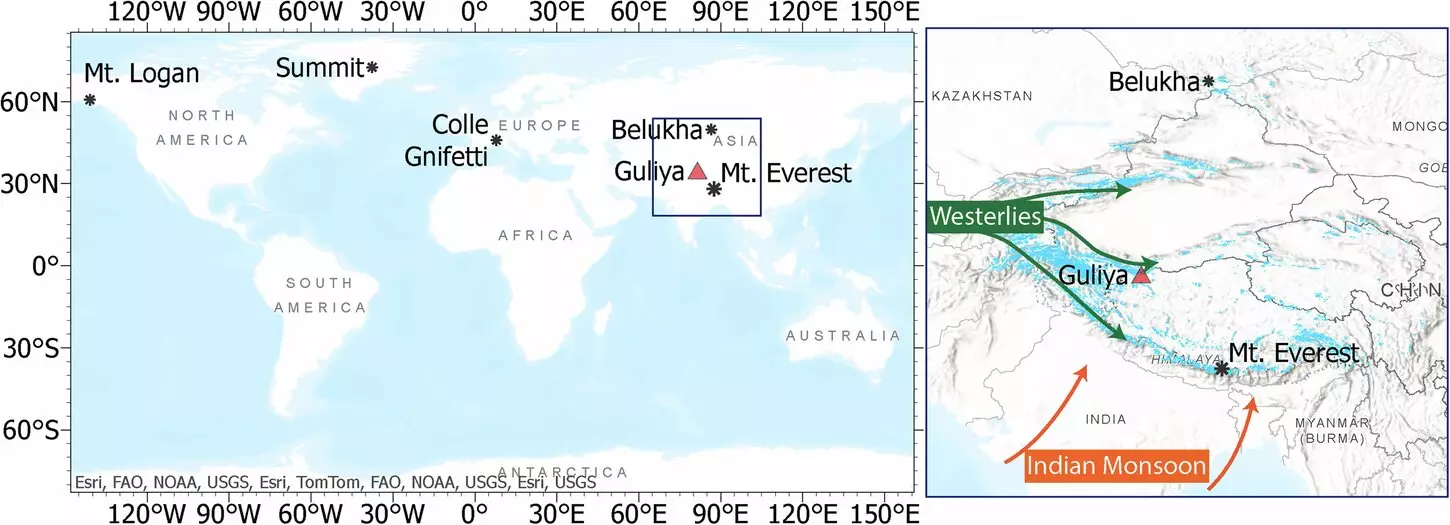In an increasingly interconnected world, the reality of pollution transcends geographic boundaries, reaching even the most remote environments. A recent investigation led by Dr. Franco Marcantonio, a geologist from Texas A&M University, shines a new light on the troubling presence of lead in the Tibetan glaciers, a region known for its pristine natural beauty. This groundbreaking research, presented in the study titled “Source of lead in a Tibetan glacier since the Stone Age,” has revealed that human-induced activities, particularly from industrial sources, have stained some of the earth’s last unspoiled corners.
The Tibetan Plateau, often referred to as the “Roof of the World,” serves as a vital ecological and climatic hub in Asia. Surrounded by the majestic Himalayas, this extensive highland covers an area four times larger than Texas and stands as a significant indicator of environmental shifts due to its sensitivity to climate change. Marcantonio and his research team focused on analyzing the Guliya Ice Cap, providing insights into how anthropogenic activities have introduced lead, a notorious neurotoxin, into this fragile ecosystem.
The investigation into lead contamination utilized the Guliya Ice Cap’s layered ice samples, which offer a chronological archive dating back 36,000 years. By examining the isotope ratios of lead trapped in the ice, the researchers established distinctions between natural and anthropogenic sources of contamination. Their findings revealed a marked increase in lead levels starting in 1974, peaking between 2000 and 2007—years that correspond with significant industrial activities in China, particularly the production and use of leaded gasoline.
This timeline of contamination not only highlights a post-industrial surge but also serves as a stark reminder of how industrial practices can reverberate through global ecosystems. The ice cores act as time capsules, ensuring that future generations can study the impact of recent human activity on the environment. The findings underscore the pressing need for awareness surrounding pollution in remote ecosystems, illuminating the broader implications of local actions on global health.
Marcantonio and his team identified Chinese gasoline emissions as the primary source of lead pollution, a revelation that underscores a significant public health risk. Despite the phasedown of leaded gasoline in China post-2007, the residual impact continues to linger, subtly infiltrating the biotic components of remote areas like the Tibetan Plateau. “Lead is a neurotoxin, and its presence in locations once thought remote and untouched highlights pervasive human influence,” Marcantonio states.
The implications of this study extend beyond understanding the contamination itself; they illuminate the interconnectedness of environmental health across disparate regions of the globe. The research opens the door for further inquiries into how anthropogenic pollutants travel through atmospheric patterns, affecting not just remote ecosystems but also the health of myriad organisms, including humans, who rely on these environments.
As the team continues its exploration into lead contamination, Marcantonio expresses a desire to extend their study to further environmental contexts, including oceans and potentially even human bodies. The ongoing investigation signifies an urgent need to unravel the complexities regarding how pollutants disperse throughout the environment, emphasizing that understanding such mechanisms is critical for public health and environmental policies.
Ultimately, this research serves as both a call to action and a catalyst for deeper dialogues about environmental stewardship. In an era when pollution knows no boundaries, the findings from the Tibetan glaciers remind us that the health of our planet is intricately woven into the fabric of our collective actions, urging a global responsibility to protect even the most remote corners of the Earth. With ongoing research and increased awareness, there lies a possibility for meaningful change—potentially restoring balance to ecosystems that have borne the heavy weight of human activity.


Leave a Reply